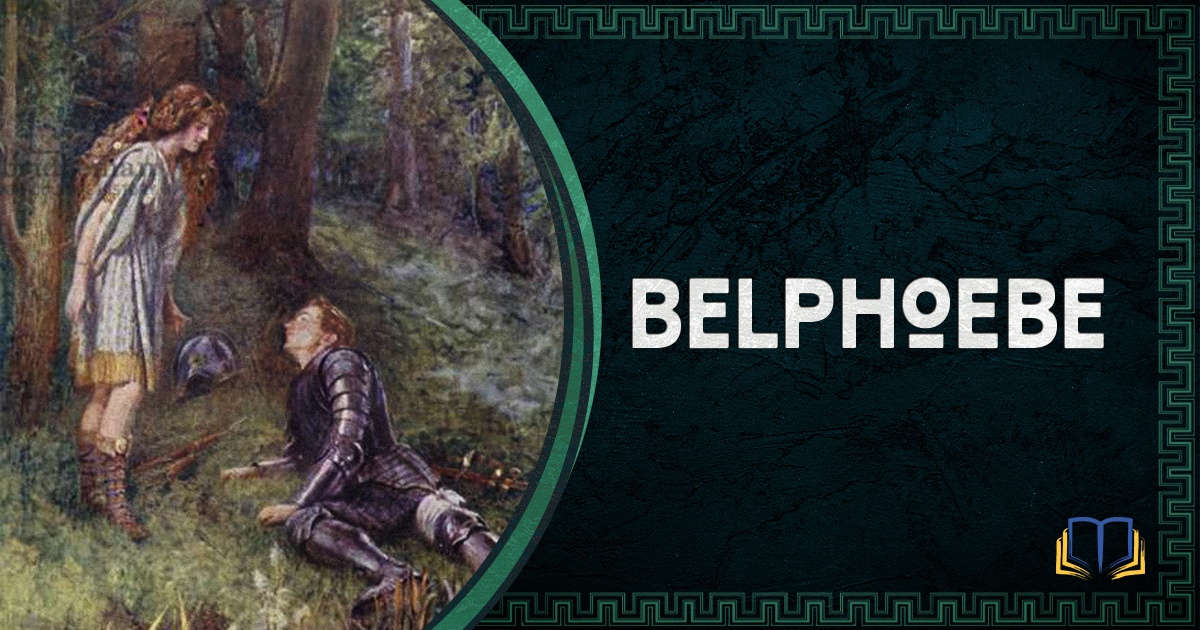Belphoebe is a character who first appears in book 2 of Edmund Spenser’s The Faerie Queene, but features more prominently in book 3.
She is a direct representation of Queen Elizabeth I, in addition to Gloriana (a.k.a. the Faerie Queene herself). She is one of several characters in book 3 that represent different types of chastity.
What Does the Name Belphoebe Mean?
Belphoebe’s name, as Edmund Spenser intended it, means “beautiful Diana.” The name “Phoebe” was an epithet of Artemis, whose Roman name is Diana, and the prefix “Bel” means beautiful.
Who Is Belphoebe in The Faerie Queen?
Belphoebe is a virgin huntress that appears in book 3 of the faerie Queen. She is not only chaste, but she is also highly competent. She is the much more active and stronger sister of Amoret, who we also meet in book 3.
She is meant to be the equivalent of the Greek and Roman goddess Artemis/Diana, a virgin huntress who takes on a much similar role.
Belphoebe makes multiple guest appearances throughout the poem. She has a passing romance with Arthur’s squire, Timias, but dumps him when she sees him kissing her sister, Amoret. This is largely meant to be a parallel of Queen Elizabeth I when she exiled Sir Walter Raleigh, one of her previous favorites.
Despite this brief romance with Timias, she remains a virgin, and this is a key part of her character.
What Does Belphoebe Represent in The Faerie Queene?
Belphoebe represents Queen Elizabeth I, but also a specific variety of chastity and virginity, paralleling Queen Elizabeth’s own notoriety as the Virgin Queen.
In book 3 of The Faerie Queene, there are several characters who represent chastity, all with a different flavor:
- Britomart: who defends chastity through fighting
- Florimell: who represents chastity by fleeing away from sex
- Amoret: who represents the forced loss of chastity through rape
- Malecasta: who represents a complete lack of chastity
Belphoebe, on the other hand, is different because she hunts. She directly takes out men who would forcibly take away her virginity.
A Criticism of Queen Elizabeth?
Though Queen Elizabeth was known for her virginity, this did present a potential problem, in that she would not produce heirs. Her virginity, therefore, led to a succession problem.
We can see a subtle critique by Edmund Spenser of Queen Elizabeth in the form of Belphoebe and some of the other virgin characters in book 3.
Because although Belphoebe is also known for her virginity, she doesn’t stay a virgin forever. She even has a relationship with Timias, even though this relationship remains chaste. Belphoebe is virtuous in that she remains a virgin until marriage, but it is never her intention to remain a virgin forever.
In this way, Spencer managed to praise Queen Elizabeth in her virginity, while also subtly critiquing her choice to remain a virgin.
Belphoebe in Subsequent Works
Belphobe was later mentioned in Kipling’s poem, “The Queene’s Men,” a poem that was based on The Faerie Queene. She is mentioned as having sent two sea-captains on a mission that eventually led to their deaths.
Belphoebe was also mentioned in a poem by Sir Walter Raleigh, “If Cynthia be a Queen.”
See our complete list of Arthurian characters for more entries like this one.
Arthurian Bibliography
- Norris Lacy, Geoffrey Ashe, Debra Mancoff – The Arthurian Handbook (Second Edition)
- Alan Lupack – The Oxford Guide to Arthurian Literature and Legend
- Ronan Coghlan – The Illustrated Encyclopaedia of Arthurian Legends
- Anonymous – Lancelot-Grail, the French Vulgate
- Sir Thomas Malory – Le Morte d’Arthur
See also my ever-expanding list of primary and secondary sources.



